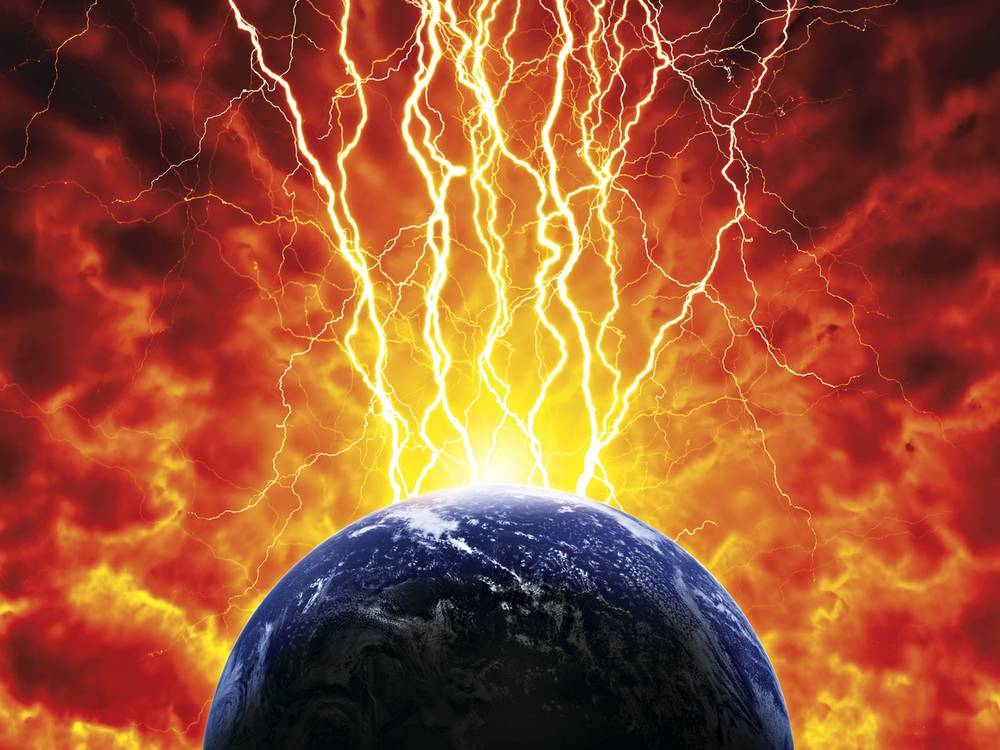The end is upon us! No wait! We got the date wrong!
It doesn’t take much to convince us the world is ending: Extreme weather, big comets, social unrest, contagious disease and financial anxiety are typical signs that the end is nigh, but a wildfire or astronomical configuration can also do the job. Extra points if the signs link to a powerful text or an ancient architectural monument. Add a messiah, a “respected” scholar and a little numerology, and bingo! You’ve got yourself an apocalypse.
In fact, you’ve got thousands of them. In the third century, Origen, the most important churchman of his time, was forced to issue an international decree essentially saying, “Wait, guys! The apocalypse isn’t happening for a long, long time,” so overwhelmed was he with followers certain that the Second Coming was upon them.
The Mayan “prophecy” that the world will end on December 21, 2012, popularized by the History Channel in 2006, is only the latest in a slew of end-times predictions reaching back almost 5,000 years. Here, then, is a sample of Great Apocalypses That Never Happened:
Holiday Survival
- Put a bow on it! Explore our inventive gift guide
- Crafty comforts: DIY holiday decor
- Check off this boozy shopping list
- Four cocktails to get you through the season
- Got everything you need? Consider giving your time to a charity
- The sweetest things: three holiday treat recipes
- Three tips for the apocalypse
2800 B.C. An Assyrian clay tablet proclaims, “Bribery and corruption are rampant. Children no longer obey their parents. Every man wants to write a book. The end of the world is approaching …” In fact, Assyria goes on to dominate the world for another 1,500 years.
1800 B.C. The Prophecies of Neferty circulate in ancient Egypt, warning the population to prepare for doom and destruction. Signs include rampant storms, odd birds nesting in the marshes, good men suffering while evil men thrive and a disappointing harvest. In reality, Egypt has its ups and downs, but it’s still Egypt, almost 4,000 years later.
634 B.C. The Romans think their number is up—if they can figure out what it is. The first king of Rome, Romulus, apparently heard it from 12 eagles that the city would perish 120 years after its founding. When 634 B.C. comes and goes, they recalculate for 389 B.C.
156 A.D. Monatus makes two declarations: I’m a prophet and the New Jerusalem is coming, right now, to ... Turkey. The idea of relocating Jerusalem for the apocalypse catches on, sweeping from Asia Minor across Europe. Eight centuries later, even the most hardcore believers give up.
992 A.D. German visionary Bernard of Thuringia warns followers to prepare for Armageddon. The area around the Rhine remains a continuous hotbed of end-times predictions for the next 600 years.
1501 The Second-Coming-obsessed Christopher Columbus continues his difficult mathematical calculations and decides there are only 155 years left until the end. “The signs ... convince me,” he writes in his Book of Prophecies.
1700 The dawn of the 18th Century is an apocalyptic heyday, thanks to scores of Puritans who rely on the Bible, astronomical observation and numerology to predict the end. The dutiful Puritans keep very strict accounts of the signs, adjusting the termination date(s) as best they can.
1910 Gas discovered in Halley’s Comet leads to the sales of “comet pills” and “canned air” to survive wholesale terrestrial destruction after the French astronomer Camille Flammarion warns cataclysm is around the corner.
1997 Russian scientist Vladimir Sobolyovhas of the Rerikh Academy makes a dreadful announcement: Earth’s axis is going to tilt by about 30 degrees, and most of the world will flood—but hidden aliens will save some of us.
2008 Switching on the Large Hadron Collider in Western Europe prompts many to fear a man-made black hole caused by protons annihilating protons in the acceleration tunnel. Although there are kinks in the machinery, imploding the planet isn’t among them.
2011 Christian radio personality Harold Camping catches media attention with his May 21 end-of-world deadline. He revises the rapture to October 21 and faces another letdown. Nowadays, the contrite Camping thinks it isn’t such a good idea to put too fine a point on the apocalypse …

Previous Discussion: